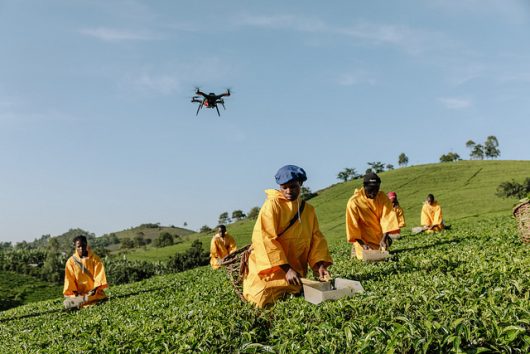Does Uganda Need Help Feeding People

Uganda has rich, fertile soil and ample rainfall, and 82 percent of Uganda's population work in agriculture. Despite these factors, which should lead to a surplus of food, Uganda still struggles with widespread hunger. This small country has a fast-growing population that is expected to reach 100 million by 2050. International nongovernment organizations (NGOs) are working hard to make sure Uganda will be able to feed its people. It is important to be informed in order to help, so here are the top 10 facts about hunger in Uganda.
Top 10 Facts about Hunger in Uganda
- Uganda's poverty rate declined from 31 percent in 2006 to 19.7 percent in 2013. However, massive population growth in northern and eastern regions was significant; therefore, the actual number of people living in poverty did not decrease much at all.
- Approximately 84 percent of Ugandans live in rural communities and rely on agriculture for food and their livelihoods. This can make families vulnerable to weather cycles and natural disasters that can affect crop yields. Even if families can produce surplus food, they often do not have the means to reliably store their surplus.
- Food storage facilities are so inadequate that approximately 30 percent of food stored is lost. Facilities do not adequately protect food stores from pests, moisture or mold. Lack of reliable storage contributes to overall food insecurity and hunger in Uganda, especially during seasons with light rainfall.
- Approximately 21 percent of Ugandans do not have access to clean water, which impedes people's ability to stay hydrated, avoid disease and cook meals. The Hunger Project has been working in Uganda to increase the number of facilities where people can access clean water and safely dispose of waste.
- Uganda has hosted more refugees than any other African country with 1.3 million refugees in 2017, primarily from South Sudan and The Democratic Republic of the Congo. The additional mouths to feed have severely strained Uganda's food resources, and both malnutrition and anemia run rampant in refugee settlements.
- The most common foods in Uganda are matoke and posho, which are both very poor in vitamins. The lack of nutritious foods and balanced diets has led to high rates of malnutrition and related diseases such as vitamin deficiencies, stunting and anemia. This deficiency actually ends up costing the state a great deal of money.
- Malnutrition costs Uganda $899 million per year, in other words, 5.6 percent of its national income. Poor nutrition affects work productivity the most, reducing the physical capacities of the laborers. This ended up costing Uganda $317 million in 2009. Malnutrition-related health treatments have further cost Uganda $254 million.
- For children, malnutrition is even more dangerous. Between 2004 to 2009, around 110,220 children died of malnutrition. A large part of the problem is that 82 percent of cases of child malnutrition in Uganda go untreated, accounting for 15 percent of child mortality cases in the country.
- Approximately 29 percent of children under the age of five are stunted, meaning they are too short for their ages. Stunting is a result of undernourishment and malnutrition and can lead to a number of other physical and mental health problems. More than half of the adult population in Uganda was stunted during childhood.
- Undernourished children are more likely to drop out of school or repeat academic years. An estimated 133,000 Ugandan children per year have to repeat grades. Uganda's government released a report in 2013 that said, "When the child is undernourished, that child's brain is less likely to develop at healthy rates, and that child is more likely to have cognitive delays." Children in poverty have even less of a chance of getting out of poverty if they cannot get an education.
Addressing the Top 10 Facts about Hunger in Uganda
A number of NGOs are working to reduce hunger in Uganda, such as Farm Africa (FA) and The World Food Programme (WFP). Both FA and WFP target Ugandan farmers to help increase their crops and process surpluses while improving the sustainability of the land. WFP also works to improve crisis responses by providing food and cash aid, helps to build resilience by providing important skills training and works with the government to provide nutritious meals to school children.
Two other organizations, The Hunger Project (THP) and Action Against Hunger (AAH), have already reached hundreds of thousands of people in Uganda. THP works in 494 villages to decrease poverty. They have helped 287,807 people access basic services by building sustainable and self-reliant communities around 11 epicenters.
AAH works in refugee centers and has helped 597,390 people in 2017 alone, focusing on nutrition, water, sanitation, livelihoods and food security. The health centers provided in Uganda work with families to screen for malnutrition and provide information on nutrition to prevent cases of under-nourished children.
Uganda has a long road ahead in its efforts to reduce poverty and hunger. By being aware of the underlying causes, NGOs and governments can work together to implement solutions. Providing sustainable farming practices, clean water and sanitation and access to medical treatment are key steps in alleviating hunger in Uganda
– Kathryn Quelle
Photo: Flickr
Source: https://borgenproject.org/top-10-facts-about-hunger-in-uganda/
0 Response to "Does Uganda Need Help Feeding People"
Post a Comment